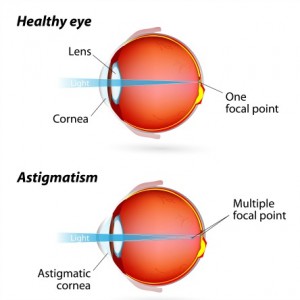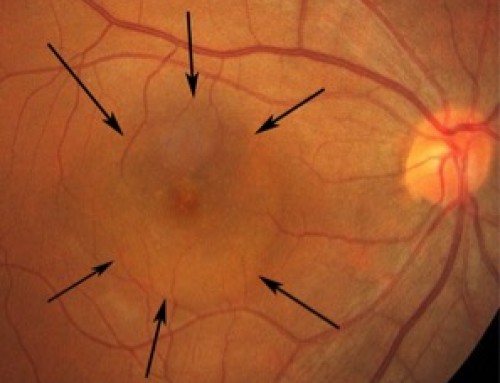What is Astigmatism?
I often get asked this question by many of my patients and it surprising how many people are quite worried about it. This blog about astigmatism explains what it is and how we correct it.
Astigmatism is a condition that is associated with how the eye focuses light on the retina. The retina is the light-sensitive tissue located at the back of the eye. If you have astigmatism, light will tend to bend in a different way to normal as it falls on the cornea and goes through the eyeball. This causes images to appear blurred.
For you to see clearly, light has to fall in a single focus on your retina. But if you have astigmatism, there will be more than one focus point. This point can either be behind the retina, in front or even both in some cases. Astigmatism is a refractive error condition of the eye like farsightedness and nearsightedness. Farsightedness is the inability to see near without glasses correction. Whereas nearsightedness is the inability to see distance without glasses correction.
Astigmatism is not a problem associated with the health of the eyes. Neither is it a disease of the eyes but more of a normal variant of the eye in the way it is made up. Astigmatism can be regular or irregular. Regular astigmatism of the cornea is the most common form of astigmatism where the principal meridians of the cornea are perpendicular (90 degrees apart).
 Regular astigmatism causes the front of the eye or the cornea to get the shape of a rugby ball. One surface whereby will be more rounded and steeper than the other. Without astigmatism your cornea is more like a football shape. This means that all surfaces within the eye will have an equal degree of roundness.
Regular astigmatism causes the front of the eye or the cornea to get the shape of a rugby ball. One surface whereby will be more rounded and steeper than the other. Without astigmatism your cornea is more like a football shape. This means that all surfaces within the eye will have an equal degree of roundness.
In irregular astigmatism, the principal meridians are not perpendicular and one common cause is keratoconus – a disease associated with the thinning of the cornea. Corneal scarring from advanced keratoconus or eye injury can lead to further irregular astigmatism.
Astigmatism may not be easy to identify specially if it is mild. That is why it is wise to have regular check-ups by your optometrist so they can accurately measure it.
With glasses you can correct most astigmatism. But in advanced conditions such as keratoconus, contact lenses are often needed.
What if I have Cataracts and Astigmatism?
That is no problem at all. We can treat both issues during one cataract surgery by using a premium (toric) lens. If you want more information about this, contact us.
If you have any specific questions about astigmatism or the causes of astigmatism, then please feel to call me on 07919 895 448 and I will be happy to discuss further.


![What are the symptoms of a posterior vitreous detachment? [infographic]](https://jaheedkhan.co.uk/wp-content/uploads/2016/07/posterior-vitreous-detachment-500x383.jpg)
![What are the symptoms of a retinal detachment? [Infographic]](https://jaheedkhan.co.uk/wp-content/uploads/2016/06/J.K.-What-are-the-symptoms-of-a-retinal-detachment-500x383.jpg)
